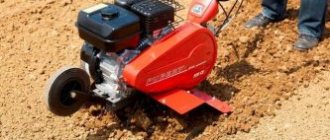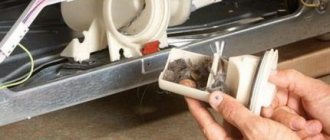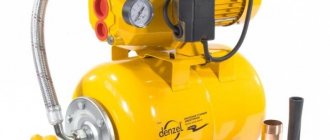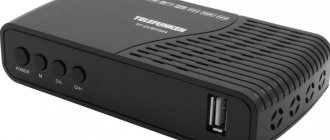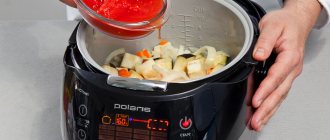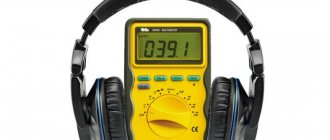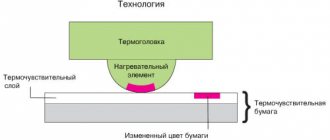If you have to cultivate large areas of soil, it is not always convenient to do this with a shovel or other hand tools. In this case, it is better to use a cultivator, the choice of which depends on several factors and conditions.
First, it’s worth defining the concept of “cultivator”. This is a specialized gardening equipment, the main purpose of which is the treatment (cultivation) of the upper sections of the soil by loosening it. Here there is often confusion regarding the question of what is a cultivator and what is a walk-behind tractor, another popular type of equipment. A walk-behind tractor is a heavy multifunctional agricultural equipment, weighing from 70 kg, equipped with an internal combustion engine and capable of performing a full range of agricultural work: cultivation, hilling, plowing, potato harvesting. When purchasing additional attachments, walk-behind tractors are also capable of removing snow, mowing grass, watering the garden, transporting goods using trailers, and so on. That is, a walk-behind tractor can be a cultivator, but not vice versa.
The advantage of a cultivator compared to walk-behind tractors is maneuverability, lightness (light weight) and fuel economy. In a garden or vegetable garden, this technique is indispensable for digging, loosening and weeding: it has proven itself well when cultivating the soil of greenhouses, flower beds, the ground between trees and rows of vegetables, under bushes.
Cultivator device
A standard cultivator consists of a frame on which the engine, transmission, working shaft with working tools, control handles, one or two transport wheels, and a protective visor are mounted.
The main working tool when working with cultivators are tillers. For most cultivator models, they are made as connections of two, four or six fairly easily removable sections. By selecting their number, they create the processing width required at this stage of work. The rotation of the cultivator cutters leads to cutting the soil into layers, crushing them and mixing them. In this case, the cultivator does not have drive wheels; it moves forward with the help of cutters, which also move, “push” it forward and cause movement.
In addition to the standard tillers described above, cultivators can, if desired, be equipped with a variety of attachments, which significantly expand the possibilities of performing agricultural work on them. Of course, such an additional “attachment” is purchased separately by the owners of the cultivators, so when choosing a cultivator for purchase, it will be useful to compare not only their technical parameters, but also the range of their equipment, their compatibility with various attachment options.
Types of cultivators: classes
Based on technical characteristics and weight category, cultivators are divided into classes.
See also: Selecting a biological treatment station EL
Ultralight class
Cultivators belonging to the ultra-light category are used for cultivating small vegetable gardens, flower beds, greenhouses or greenhouses. Thanks to its small dimensions, x is easy to transport. Some models have a removable handle, and they fit compactly into a bag or backpack.
Ultralight models have common technical indicators:
- power – from 1.5 to 3 l/s;
- weight – up to 15 kg;
- grip width – 20-30 cm;
- processing depth – up to 13 cm.
You can work with such a cultivator only on previously cultivated soils, where a large number of weeds do not grow.
Ultralight cultivator "Sadko T-240"
Small agricultural equipment for cultivating soil without turning over soil layers. Helps keep small vegetable gardens and flower beds in order. Can be used for hilling.
It has the following operating parameters:
- engine – petrol, two-stroke;
- power – 1.7 l/s;
- speed transmission – 1 forward;
- processing depth – 12 cm;
- cultivated width – 23 cm;
- weight – 14.5 kg.
The cultivator is supplied with four cutters.
Light class
This cultivator is used for cultivating small plots of land with soft soil. It is considered as a device for additional loosening of the earth after processing with a tractor or other heavy equipment.
The light class includes equipment with the following capabilities:
- power – from 2.5 to 4.5 l/s;
- weight – up to 45kg;
- loosening width – 35-50 cm;
- tillage to a depth of up to 35 cm.
Such cultivators are easy to move. Such a device is usually accompanied by a small hiller for forming planting furrows.
Light cultivator “Viking HB445.2R”
The cultivator copes well with soil cultivation in small gardens. Its special feature is reverse gear support. Reversing movement significantly increases the maneuverability of the product, which is of particular value when turning in small areas.
Cultivator "Viking HB445.2R"
Technical properties of the cultivator:
- power -3.5 l/s;
- power source – gasoline;
- engine – four-stroke;
- weight – 40 kg;
- cultivation width – 45 cm;
- processing depth – 25 cm.
For easy control, the cultivator is equipped with a steering wheel with comfortable handles. The design of the product allows the installation of additional devices to expand functionality.
Middle class
The average group of cultivators can cultivate not only light soil, but also soil with a clay composition. General characteristics of the middle class include:
- engine power – from 4 to 6 l/s;
- weight category – 45 -60 kg;
- working width – up to 85 cm;
- loosening depth – from 25 to 35 cm.
See also: Choosing a water pump for a summer house
With such cultivators, using cutters you can not only cultivate the soil, but also move around. As additional equipment, a mower, plow, harrow or hiller is installed on medium models.
Middle class cultivator model - “Pubert ARO 55 PC3”
Sufficiently powerful equipment for cultivating land plots. Thanks to the chain gearbox, this cultivator can efficiently loosen the soil to the lowest layers.
Cultivator "Pubert ARO 55 PC3"
Technical features of the model:
- engine type – petrol;
- maximum power – 5.5 l/s;
- product weight – 58 kg;
- grip along the width of cultivation – from 60 to 85 cm;
- processing depth – 32 cm.
The device has two forward gears and one reverse gear. The model copes well with processing virgin soil. In second gear it can grind weeds with roots. The kit includes four cutters that can be adjusted to the required size.
Heavy class
The group of heavy walk-behind tractors includes equipment for cultivating virgin lands. It has higher technical performance:
- power – more than 10 l/s;
- weight – over 60 kg;
- working width – more than 1 m;
- loosening in depth - from 25 cm.
You can lower the cultivator into the soil and raise it by pressing the handle - down or up. When working with a walk-behind tractor, the pressure ratio is one kilogram per centimeter.
engine's type
Engines can be gasoline, diesel, electric. Gasoline engines, in turn, can be two-stroke or four-stroke. Electric motors can be powered either from the mains, that is, they must be constantly connected to an outlet using an electrical cable of the required length, or from a built-in battery.
Electric engines and two-stroke gasoline engines are usually used in light class cultivators. Four-stroke gasoline and diesel engines are installed on medium and heavy class cultivators. The difficulty of operating cultivators with a gasoline engine is the need for constant maintenance. Fuel should be added regularly and oil should be used to lubricate parts. In addition, each model requires certain brands of oil and fuel, so you must strictly follow the instructions. Compared to electric models, gasoline models make too much noise. It is worth remembering about gasoline exhausts, harmful plants, soil and people. Models with a two-stroke engine are cheaper and simpler, but they require more fuel.
Electric cultivators do not have as much power as models with an internal combustion engine, but are great for small areas. Also, according to the observations of some users of electric models, vibration can irritate bees if work is done near the apiary.
Petrol cultivator Crosser CR-K12
Diesel cultivator ZIGZAG DT 902
Electric cultivator FERMER F-105
Variety of cultivators
Among the large number of types of garden equipment in this area, gasoline models stand out. They differ in autonomy. Gasoline cultivators can be used at a respectful distance from the house. These cultivators have an internal combustion engine.
Gasoline cultivators vary in price and engine power. This type of cultivator is used when there is a large household plot or when carrying out farming activities.
The advantages of a gasoline cultivator include its high power, wide price range, and relative reliability. Using a gasoline cultivator, you can cultivate virgin soil.
The disadvantages of a gasoline cultivator include the increased volume it makes during operation. Also, this type of cultivator is heavy and has significant fuel consumption during operation.
It is not recommended to use a gasoline cultivator in a greenhouse due to the emissions it produces during operation.
Electric cultivators are much lighter than their gasoline counterparts, more productive and do not make loud sounds during operation. For full operation of the electric cultivator, you must have a carrying case. The length of the cord depends on the distance of the treated area from the source of electricity.
Electric cultivators are mainly used on small plots of land, the area of which is less than 10 acres.
The advantages of an electric cultivator include its affordability for most of the country's population, ease of operation, compactness and the ability to carry out deep plowing.
The disadvantages of an electric cultivator, without a doubt, include the need for a wire. Thus, the area on which this garden unit can be used is reduced.
You need to be very careful when working with an electric cultivator so that the cable is not damaged. There is also no possibility of using an electric cultivator over a large area of land.
Cordless cultivators stand out for their autonomy. The main thing is that the battery is well charged. Included in the group of equipment that can be used indoors.
The advantages of battery cultivators include their autonomy, absence of sound during operation, and no emissions of harmful substances. It is very lightweight, so older people can use this gardening equipment.
The disadvantages of battery cultivators include limited operation, which depends on battery charging. Many potential buyers may be put off by the high cost of this type of cultivator.
Engine power and transmission type
Power is expressed in horsepower, and depending on their quantity, such devices are divided into three types: light (up to 4 hp), medium (4-6 hp) and heavy (more than 6 hp) devices. Typically, the power of a cultivator is directly related to weight. The greater the power of the device, the easier and faster it cultivates the land. Engine displacement – for models with a gasoline unit. The “golden mean” rule applies here. A very weak engine with a small displacement will not be able to cope with an average load. A large and powerful engine will consume a lot of fuel. The amount of fuel consumption ranges from 1-2.5 liters per hour of intensive work.
The transmission transmits rotation from the engine to the working tools - cultivator cutters. The transmission also includes a clutch. This is a device that allows you to turn on and off rotation from the engine to the working body. The following types of transmissions are used in cultivators: gear-worm transmissions, belt-tooth-chain transmissions and some others.
Lightweight cultivator Krones GHA35
Medium-power cultivator MTD T/245
Heavy cultivator Skiper SK 700
Types of cultivators
These mechanisms may differ in type depending on power consumption, their actual weight, method of power supply and control. When choosing a cultivator, you need to take into account the size of your estate, certain conditions under which the device will be operated, and take into account the necessary power requirements.
Depending on weight and power
All equipment according to this parameter can be divided into 4 types:
Super-light model - this mechanism has a fairly low power of up to 3 l/s and a low weight of 15-20 kg. The ultra-light cultivator is suitable for small homesteads and makes tasks such as sowing and transplanting easier. This is due to the fact that to perform such work it is necessary to loosen the soil to a depth of no more than 8 cm. The width of the cultivated soil during a single cultivator operation is 20-30 cm. This functional feature is very convenient when it is necessary to dig up the soil in hard-to-reach areas of the garden.
Mini-cultivator
These models use an engine running on liquid fuel (gasoline) or gasoline and oil. The first option is less noisy and more economical. The kit of such a device includes handles that can be removed (this is done specifically so that it takes up less space when transporting it).
Lightweight model - power used is 4.5 l/s, and actual weight is approximately 40 kg. It has in its design an additional hinged mechanism called a hiller. The depth that the mechanism can reach when loosening is 0.18 m. Typically, such models are used when processing a summer cottage with fairly soft soil.
Lightweight model
Medium model. Cultivators of this type have greater power - 4-6 l / s, and greater weight, which varies from 45 to 60 kg. The average model of the device is ideal for processing large summer cottages and has a high efficiency. The achievable tillage depth during loosening is 28 cm. This device is equipped with special cutters that have considerable power and are capable of cultivating soil 40-85 cm wide.
Medium models
Despite the fact that the device has great power and weight, it can be used normally in both large and small areas. This is due to the presence of reverse gear. The only drawback of this model is the inability to work in hard-to-reach areas of the garden. The attachments included in the kit include a plow and a hiller. A special feature of the design are metal wheels, which serve to increase the traction force of the cultivator.
Heavy model. Such mechanisms have a high power of over 6 l/s and a corresponding weight of more than 60 kg. Due to the design features, fuel consumption increases. A heavy model is usually purchased for cultivating large plots of land that have either never been plowed or have not been plowed for a long time.
Heavy model
Structurally, this model can have many additional attachments that perform the following functions: watering plants, digging them up, processing them, cutting grass and the functions of a reversible plow. The engine of this device has a four-stroke design and can also operate with loads whose weight does not exceed 300 kg.
Depending on the type of engine (its power source)
Electric. If a motor cultivator has an electric power source, then this model does not have gasoline emissions, and therefore is environmentally friendly. An electric cultivator for a summer residence is quite easy to use and can cultivate an area within the radius of available power supply - depending on the length of the wire and the location of the power source. Typically, this type of mechanism is used in small areas - this is due to the above disadvantage. If you own a plot of standard size, then an electric cultivator is an ideal option for cultivating it.
Electric view
Rechargeable. A battery-powered cultivator for a garden is similar in principle to an electric one, but has a huge advantage due to its mobility and autonomy, that is, it can move freely across areas of any size. The only drawback may be the need for timely charging.
Cordless motor cultivator
Gasoline. The difference between the model with a gasoline power source is its high power. The petrol cultivator can work without stopping. The only thing that is necessary for this is a constant supply of A-95 or A-92 fuel, or the use of special oil. A huge disadvantage of this type is the formation of carbon deposits due to the combustion of fuel substances, which ultimately leads to breakdown of the device. The model is not economical and requires a large amount of fuel to operate. The motor can often break down, and repairing it is not economically viable.
Gasoline motor cultivator
Manual. If none of the mechanized devices suits you economically, then a manual cultivator for the garden can become an indispensable assistant for you. This type is especially useful when processing hard-to-reach places that, due to their design features, cannot be reached by mechanized devices. Such areas are usually places where flowers are planted, alpine hills and parts of the garden located near fences. Depending on the design and purpose, soil cultivators are divided into:
- Asterisks. The name is directly related to their design. A manual star cultivator is a shaft on which star-shaped disks are attached. When used, a handle is placed on the mechanism so as not to bend over when working. The cultivation of the land occurs as follows - the discs burrow into the ground and, when turned, capture it along with the weeds growing on the ground.
With the help of a hand-held cultivator for a summer residence, you can easily hill up small areas of potato plantings or do work on lawns, flower beds and other areas. The disadvantage of a manual star mechanism is the ineffectiveness of its use on some types of soil, for example, clay, or soil with a hard crust.
- Ripper. Structurally, this mechanism consists of sharp teeth located on long handles. The essence of the work is to loosen hard soil by penetrating sharp teeth into it. When working, it is necessary to exert physical effort to swing the ripper to stick it into the ground, as well as strength to pull it back out. If your site has fairly large plantings, then it is advisable to purchase both models of hand cultivators.
Ripper
Maximum width and depth of cultivation
Tilling width is the maximum strip width that the cultivator can cover. A very narrow coverage adds time that is required for high-quality soil cultivation. The width of the processed strip depends on the engine power. Approximately 1 hp required for twenty centimeters of land covered in width. A wide grip is more convenient for processing large areas of land. If weeding between beds is important, then a narrow grip is more convenient.
The tillage depth reflects the distance to which the cultivator cutters penetrate the soil. As a rule, it is directly proportional to the diameter of the cutters. In some cases, the manufacturer separately indicates the cutting depth and cutter diameter. The average value usually does not exceed 25 cm. The tillage depth is set by the adjustable position of the coulter (a strong metal strip that is vertically fixed to the rear of the cultivator). The cutting width is usually adjusted by installing various cutters.
Cultivator with a maximum cultivation width of 1050 mm ZIGZAG GT 903
Cultivator with a maximum cultivation depth of 350 mm Workmaster WT-85
About the device
With such a large assortment, it is very difficult to choose the most reliable and popular motor cultivators , but by following this article, you will not have any difficulties in this matter.
Not many people know the difference between a walk-behind tractor and a cultivator. A cultivator is a device that helps you cultivate the soil efficiently, remove weeds, form beds and much more.
They are very easy to manage, and in addition they are highly effective in their work. The big advantage of a cultivator is that it saves your health, nerves, time and energy. These units are used for cultivating vegetables, berries, potatoes, and so on.
Cultivator
The cultivator is an excellent substitute for a shovel; at the same time, it wonderfully cultivates the soil, makes it soft, and also removes weeds, which is a significant plus. However, this technique costs a lot of money, unfortunately.
Depending on the size of your future cultivator, you will be able to cultivate hard-to-reach areas of land that cannot be easily cultivated, places between bushes, flower beds, inaccessible places in greenhouses, and so on.
Also, if you buy a high-quality electric cultivator, manual, for the garden to cultivate the land, you will not have to worry about the fact that it can easily and quickly break.
A quality cultivator has a stable, strong design and reliable build quality.
For more information about the operation of the cultivator, watch the video:
In addition, cultivators have various additional features that will help you achieve the ideal garden or vegetable garden.
I would like to note that the cultivator is also used to level, fertilize the soil and dig up crops. This unit is very functional, and if you have a summer house, then you will definitely need it. It is clear that the cultivator is smaller than the same walk-behind tractor.
Cultivator sizes vary from eight to forty-five kilograms. You should definitely pay attention to this.
Even a woman can handle a cultivator weighing from eight to twelve, but men can handle larger units.
He also digs up the soil to a depth of twenty-five to thirty centimeters. That is, driving such a machine will not make it very difficult for you.
To choose a cultivator, you need to know what types of manual cultivators exist in general.
Cultivators are divided into three types: light, medium and heavy cultivators.
A light cultivator is a unit that can plow no more than thirteen acres. The downside is that such cultivators will not plow deep soil. They can plow no more than twenty centimeters. The advantage is that they are not very heavy, and you can easily carry them to the place you need.
The average cultivator will be able to plow a maximum of fifty acres. Such a machine weighs more and is harder to carry (for example, a Viking cultivator).
A heavy cultivator is the most suitable option in terms of quality. He weighs more than ninety-five kilograms. I would like to note that it has great power, and with this unit you can use additional equipment.
Types of cutters and their speed
The main tool when working with cultivators are tillers. For most cultivator models, they are made as connections of two, four or six fairly easily removable sections. By selecting their number, they create the processing width required at this stage of work. Of course, when work is to be done on heavy, clayey soils, the number of installed sections of soil cutters will need to be reduced. Moreover, it will be important to do this in cases where a cultivator will have to plow up virgin soil or restore agricultural cultivation of a long-abandoned site.
Milling cutters can be either non-separable or collapsible. It is better to choose collapsible knives, since they can be easily replaced if necessary. There are two types of cutter design: “crow’s feet” and with saber-shaped knives.
The last option is the most popular and can be called standard. After all, these types of products are time-tested: their effectiveness is quite high. They have the optimal shape and material. The knives are made from high-quality, high-strength steel.
As for crow's feet products, such products are used for hard soils. They have a solid structure, non-dismountable, due to this their strength is high. Such products are effective in controlling weeds and processing virgin soil. It should be noted that the cutter is a self-sharpening tool. No additional manipulations in this direction are required.
The optimal cutter speed for cultivators is considered to be 150-170 rpm. At this speed of rotation of the cutter, deep cultivation can be done to a depth of up to 15 centimeters. At 200-220 rpm, you can loosen the top layer of soil to a depth of 8-10 centimeters and do pre-sowing cultivation to a depth of 6 centimeters. And increasing the speed to 275-330 ensures effective loosening of row spacing and destruction of the soil crust.
Cultivator with saber blades SunGarden T/35
Cultivator with houndstooth cutters Zigzag GT 134
How to choose the right cultivator
When purchasing a cultivator, you need to take into account not only technical parameters, but also the characteristics of the cultivated area - its size, structure, condition and type of soil. Let's look at each criterion in detail.
The structure of a site is the totality of all its zones. Depending on this, the following rules can be distinguished:
- Summer cottages are usually divided into many small zones for various purposes: garden, flower garden, flower beds, lawns, berry gardens, beds for various vegetable crops. In this case, it makes sense to purchase ultra-light class cultivator models. The small working width makes them mobile and allows you to work in narrow rows and hard-to-reach places.
- If the size of one zone exceeds 5 acres, and the total area of the site is from 10 to 25 acres, it is advisable to use light and medium class equipment. It is less maneuverable, but more productive.
- On 25–50 acres, where one or two crops are grown, it is better to work with a middle-class cultivator.
- To cultivate a field with an area of more than 50 acres, you need a heavy cultivator or walk-behind tractor, which can be additionally equipped with attachments.
It is important to understand that no cultivator is suitable for all types of work without exception. You need to focus on those that you consider to be the main ones in your area.
Various soil cultivation operations require the cultivator to operate at a certain shaft speed. A universal option when the unit has a gearbox and can provide a working shaft speed range from 30 to 300 rpm.
Let us highlight the main functionality of the cultivator depending on the shaft speed range:
- At low speeds (30 - 40 per minute), you can use wheels instead of cutters and move at a speed of 0.5-1 km/h with a plow, hiller or harrow.
- Increasing the speed to 100-130 per minute allows you to loosen the soil to the depth of the shovel bayonet.
- After the main plowing at 150-170 shaft revolutions, it is good to cultivate the top layer of soil 5-10 cm thick, breaking up large lumps and leveling the surface (harrowing).
- The rotation speed of the cutter is 180-200 rpm, which allows you to simultaneously destroy weeds and prepare a layer of soil 2-5 cm thick for sowing seeds.
- At 200-220 shaft revolutions per minute, you can effectively destroy soil crust and weeds before emergence. After the emergence of seedlings, small inter-row loosening and destruction of weeds can be performed at the same speed.
- The maximum rotation speeds of the cutter (275-330 rpm) ensure the most effective destruction of weeds and the creation of an optimal structure of the seed layer of soil (up to 3 centimeters).
Number of speeds
The number of forward speeds allows you to adjust the speed of the cutter and determine the type of work with the soil as described above. On modern cultivators, it is desirable to have a reverse gear. Light and ultra-light models, of course, do not have reverse gear, but they have a special handle to make it convenient to lift the cultivator and turn it in the right direction. This will be especially useful when working near various obstacles (fences, for example) or in some narrow, limited areas when you constantly need to make an effort to rearrange the cultivator. Heavy class devices weighing more than 60 kg have reverse as standard.
Reverse cultivator FERMER FM-701MS
Is it possible to sharpen cutters? Why you can’t sharpen reciprocating cutters for cultivators
It's actually simple. Most domestic manufacturers purchase knives from one plant in the Smolensk region, where knives are made from hardened steel with the cutting edge treated with high-frequency currents.
Please note that domestic cutters are always installed on the cultivator flange using bolts. This is due to the fact that hardened steel is difficult to weld. So you can understand that many Chinese cutters for welding are made of metal of worse quality than domestic ones.
Reciprocating cutters that have seen kilometers of soil
The process of creating such an edge is accompanied by melting of the edge of the blade and its rapid cooling. As a result, the knife blade under magnification will look uneven and resemble a saw.
When working in the ground and constantly hitting rocks, reinforcement, and so on, the carbide blade does not become dull, but crumbles. Forming deeper “saw” teeth. Therefore, many people call such cutters self-sharpening.
New knife shape
Frankly speaking, in my opinion this term is not entirely fair. Splitting knives are more suitable.
Now to the question of sharpening at home. You can sharpen walk-behind milling cutters using a high-temperature sharpening machine. If such a device is not in the garage, then there is no need to take a file from the shelf!
The file will remove small teeth, making the knife smooth, which can lead to a large chip or break of the knife during subsequent cultivation and contact with stone.
If a nick appears on the cutter, just continue working with it. You will see, after a while it will disappear on its own.
I hope the article is useful to you. Please like and subscribe to MY CHANNEL! It will be especially interesting for amateur gardeners who want to make their work easier with mechanical assistants.
Interesting hitch? Find out about other amazing gadgets for your gardening helper. Here are links to my articles:
About mounted snow blowers
About walk-behind harrows
About the choice of lugs for a walk-behind tractor
About motoblock hedgehogs
This and much more on my channel!

